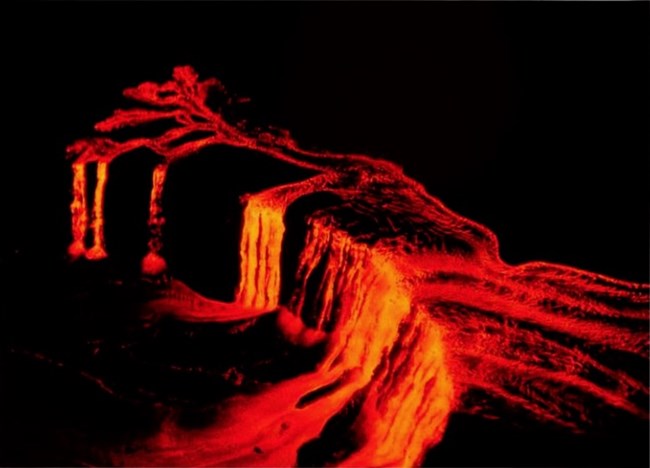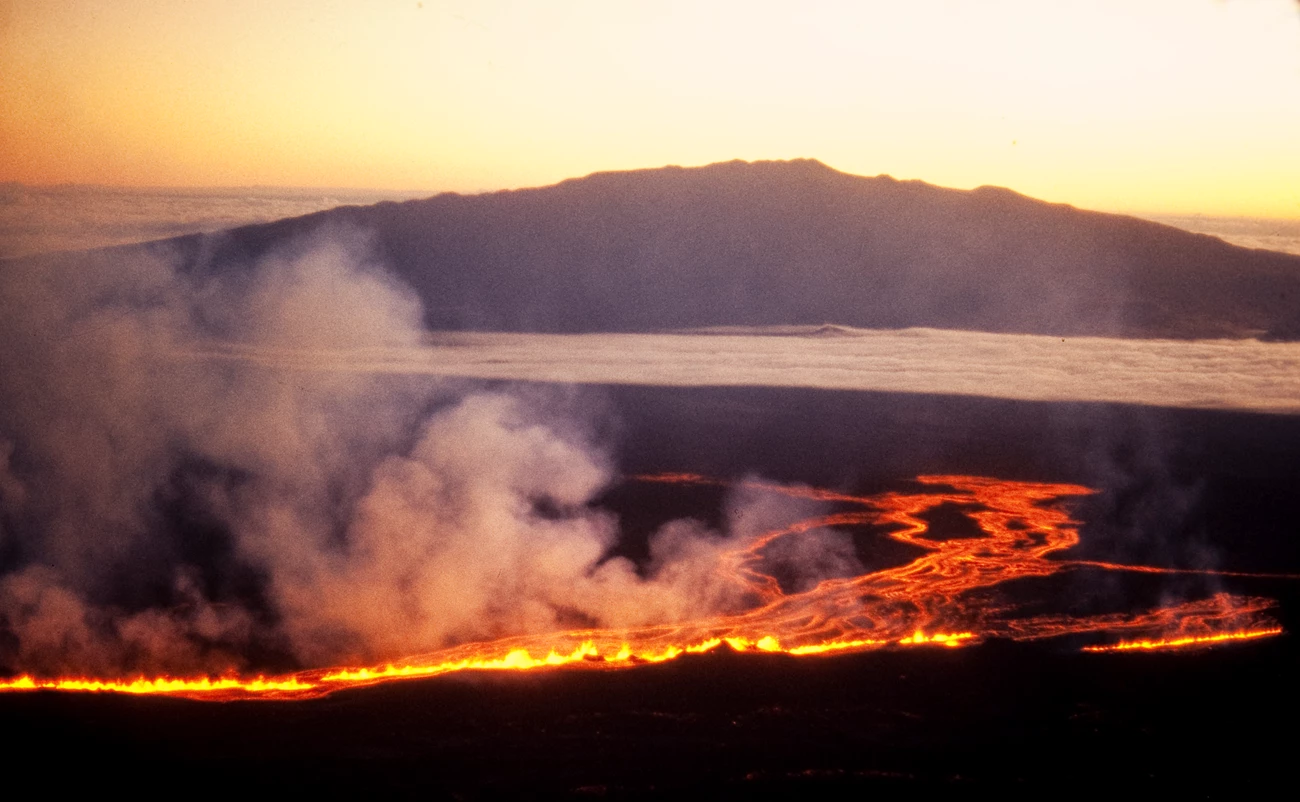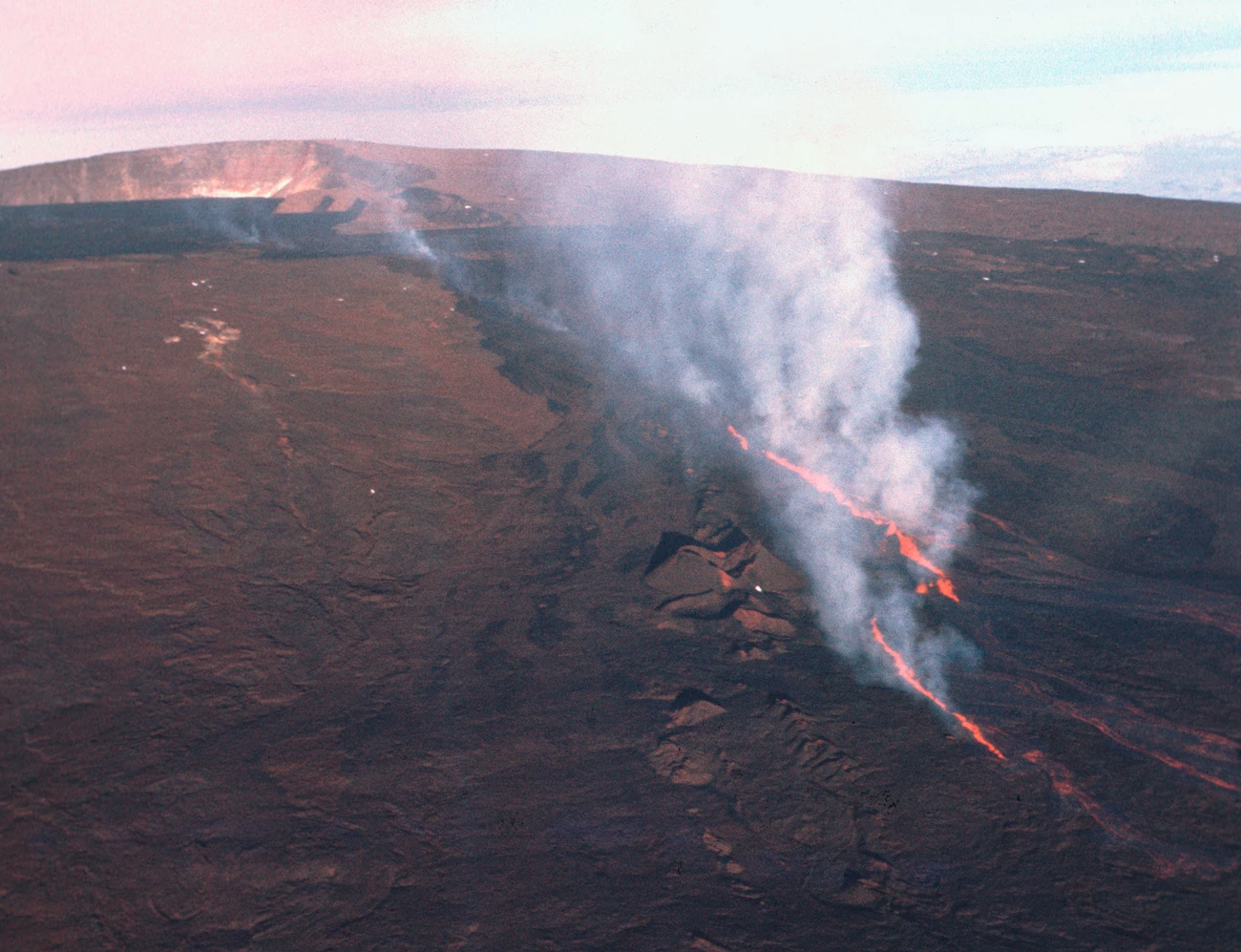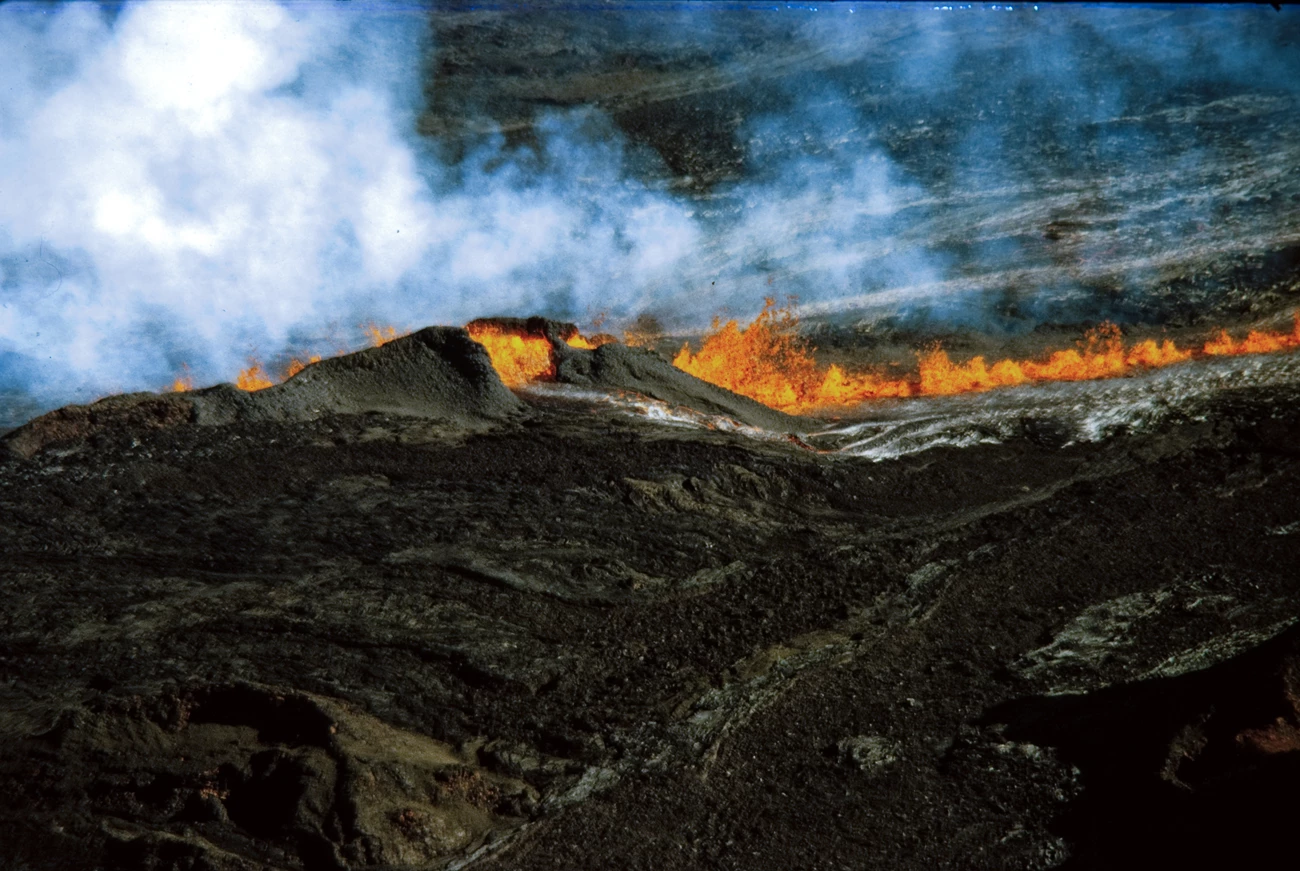
Just before midnight on July 5th, 1975, Mauna Loa ended its quarter-century period of quiesence. At the time, it was the volcano's longest recorded period without eruptive activity... soon to be outdone by the period following the 1984 eruption. At 11:42 p.m., a small glow was noted above the southwest end of Moku‘āweoweo. Within one minute, the glow extended across the entire summit area and a fume cloud more than 3,300 ft (1,000 m) high was illuminated with a bright orange-red glow from the lava fountains on the caldera floor. Lava flowed across the caldera, and into the upper parts of the Southwest and Northeast Rift Zones, the latter of which became the epicenter of activity. However, the eruption would be brief, concluding at 7:30 p.m. the next day. 


Additional Resources:
|
Last updated: February 10, 2021
